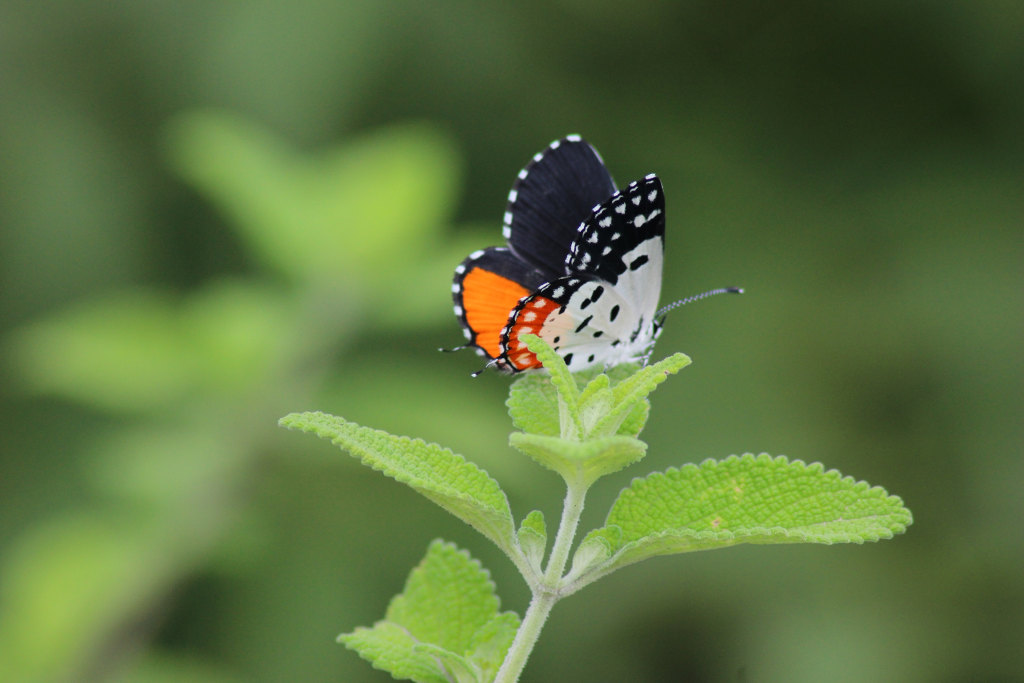
Red Pierrot Butterfly: A Tiny Jewel of Indian Forests
| Common Name | Red Pierrot |
| Scientific Name |
Talicada nyseus |
| Family | Lycaenidae |
| Description |
The Red Pierrot Butterfly (Talicada nyseus) is one of the most visually enchanting butterfly species found across India, particularly in forested and semi-open landscapes. Small in size but big in charm, the Red Pierrot Butterfly captures attention with its striking contrast of black, orange, and white on its delicate wings. Its vivid coloration and calm flight make it a favorite among butterfly enthusiasts, nature photographers, and conservationists alike. Known for its slow, graceful movement and habit of flying close to the ground, the Red Pierrot is often found near its larval host plants—mostly species of Kalanchoe. Unlike many butterflies that prefer bright sunlight, this species is commonly seen during early mornings or cloudy days, adding a touch of life to overcast forest floors and garden corners. Its black forewings are speckled with white, while the bright orange on the underside of the hindwings gives the butterfly its “pierrot” or clown-like appearance. Beyond its beauty, the Red Pierrot Butterfly plays an important role in local ecosystems. As a pollinator and a food source for other wildlife, it contributes to the ecological balance of the habitats it occupies. Because it is sensitive to habitat changes, its presence—or absence—can serve as an indicator of environmental health, especially in forest edges, gardens, and sub-tropical woodlands. Understanding and appreciating the Red Pierrot Butterfly deepens our awareness of the biodiversity around us. By conserving its habitats and native flora, we help protect not just one butterfly, but a whole network of life that thrives alongside it. |



